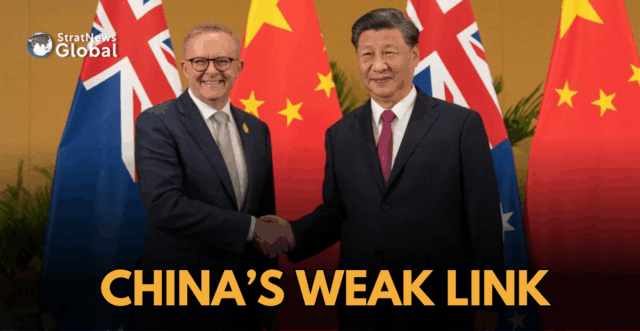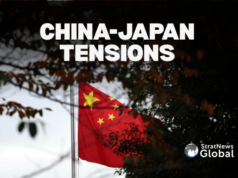China’s dominance in the global rare earths and critical minerals trade has long been a strategic advantage, but recent investigations by Discovery Alert, Four Corners, Mining News, and ABC News reveal an unexpected dependency — Beijing’s growing reliance on Australian zirconium, a material essential to both civilian nuclear power and advanced weapons development.
Zirconium, commonly found in tiles and ceramics, has evolved into a critical resource for modern defence and energy systems. Its high-purity variant — zirconium sponge — is indispensable in nuclear reactors because it does not absorb neutrons, making it ideal for cladding nuclear fuel rods.
According to Mining News, Australia is the world’s largest producer of zirconium, while China is its leading importer. ABC News data show that Australia supplies about 41 per cent of China’s zirconium imports — a concentration that exposes Beijing to potential supply disruptions in a tense geopolitical environment.
Zirconium’s high melting point (above 1,800°C) also makes it suitable for components in hypersonic weapons — a field where China is accelerating research and deployment. Four Corners reported that once zirconium enters China, its final use is nearly impossible to trace, given the overlap between its civilian nuclear and military-industrial supply chains.
China’s system of military–civil fusion allows materials like zirconium to flow between civilian and defence sectors with little transparency. Four Corners and ABC’s PM program both highlighted concerns that these supply chains may already be contributing to Beijing’s missile and nuclear programs.
Defence analysts cited by ABC warned that zirconium’s role in both nuclear fuel and hypersonic systems makes it a key enabler of strategic capability — and a potential lever in any future supply chain confrontation.
Four Corners further revealed that some zirconium imported by China is being re-exported to Russia, potentially aiding its military-industrial complex despite sanctions. Between February 2024 and February 2025, Chinese zirconium exports to Russia surged over 300 per cent, reaching nearly AUD 70 million. Russian buyers reportedly include CMP, a subsidiary of Rosatom, Moscow’s state nuclear enterprise.
These findings have raised alarms in Canberra and among its allies that Australian-origin zirconium may be indirectly feeding into Russia’s defence sector through Chinese intermediaries.
The revelations have reignited debate in Australia over the governance of critical mineral exports. Mining News and Discovery Alert both noted rising calls for stricter oversight, especially for materials with potential dual-use applications. Canberra now faces the challenge of balancing its role as a leading supplier of critical minerals to China with its security obligations under the AUKUS framework and its broader Indo-Pacific partnerships.
The developments have also resonated in New Delhi, which has been pursuing its own critical minerals strategy to reduce reliance on Chinese processing and secure inputs for clean energy and advanced technologies.
India’s 2023 Critical Minerals Strategy identified zirconium as one of 30 key resources essential for national security, energy transition, and industrial self-reliance. While India possesses limited zircon reserves, it remains dependent on imports for high-purity grades used in nuclear and defence applications.
The revelations from Four Corners and ABC reinforce concerns in India’s policy circles about the strategic vulnerabilities that come from overdependence on opaque global supply chains dominated by China. They also lend urgency to India’s efforts to build direct partnerships with mineral-rich nations such as Australia under mechanisms like the India–Australia Critical Minerals Investment Partnership.
For India, the zirconium episode underscores both opportunity and caution — the opportunity to collaborate with trusted suppliers like Australia, and the caution that even such ties must be managed through robust transparency and export frameworks that guard against diversion to adversarial uses.
As Four Corners concluded, zirconium may not command the same public attention as lithium or rare earths, but it sits at the heart of a rapidly evolving contest over strategic resources. For both Australia and India, controlling access and ensuring traceability of such materials will be key to maintaining autonomy in an era of intertwined supply chains and intensifying geopolitical competition.





